One of the many ways to enhance the look, feel, or function of a part produced through plastic injection molding is by modifying its surface texture. There are many texture and finish options. Some of the more commonly chosen options include:
- Polished
- Matte finish
- Bead blasted finish
- Etched finish
- Geometric lines
- Specialty finish such as leather or wood grain, slate or coblestone, or pebble
- Contrasting lettering, logos, or graphics
These options can be incorporated over the entire surface of the part or in specific areas only.
Visual Benefits of Surface Texture
Part designers choose texture for several aesthetic reasons. In some cases, it may match a style they have in mind or improve a part's perceived value. Texture can give a part the appearance of more depth and produce a more crafted look that will impress your customers.
In other cases, texture can conveniently obscure common visual imperfections such as flow lines, knit lines, blush marks, sinks, and shadow marks. It can also provide a surface that withstands incidental contact damage in shipping and fingerprint smudges from handling.
Physical Benefits of Surface Texture
Beyond the simple aesthetic considerations of texture, it also has a number physical benefits. They include:
- Using texture to make undercuts. If you have a part that will not consistently come across to the moving half of the mold, texture on some hidden surfaces could give the pull you need.
- Improved paint adhesion. Paint holds more firmly to a textured part during additional molding operations.
- Improved grip. Textured parts are easier to hold. This improves usability and can increase safety in certain applications.
- Better sticker adhesion. Like paint, stickers applied to plastic parts are more likely to stay affixed if the surface has a slight texture.
Building with Texture in Mind
The time to think about texture is early. Standard texture books can demonstrate the look and feel of various types, which are characterized generally by depth and shape of the peaks. Each texture has a suggested draft range and a durability. Depending on your texture, you may need larger draft angles to ensure that your part releases from the tooling without drags or scuffs. Adding or increasing texture after your tooling is built can have a big impact on your budget.
Surface Texture Costs
Generally speaking, the addition of texture to a part is not expensive when designed early. However, a number of factors can affect the overall cost. These include the shape of the part and complexity of the mold, the amount of area to be textured, tool characteristics (ribs, vents, pockets, etc.), complexity of the texture pattern, and the accessibility of areas to be textured. You’ll want to keep these aspects in mind as you consider your objectives and your budget.
Helping You Assess Your Options
There are many reasons to consider adding texture to a plastic part. Of course, there are a number of reasons to keep things simple and smooth as well. Would the parts in your next plastic injection molding project benefit from having a textured finish? We can help you decide. Give us a call and let's discuss your options.

 SINCE 1993 MADE IN USA
SINCE 1993 MADE IN USA 



